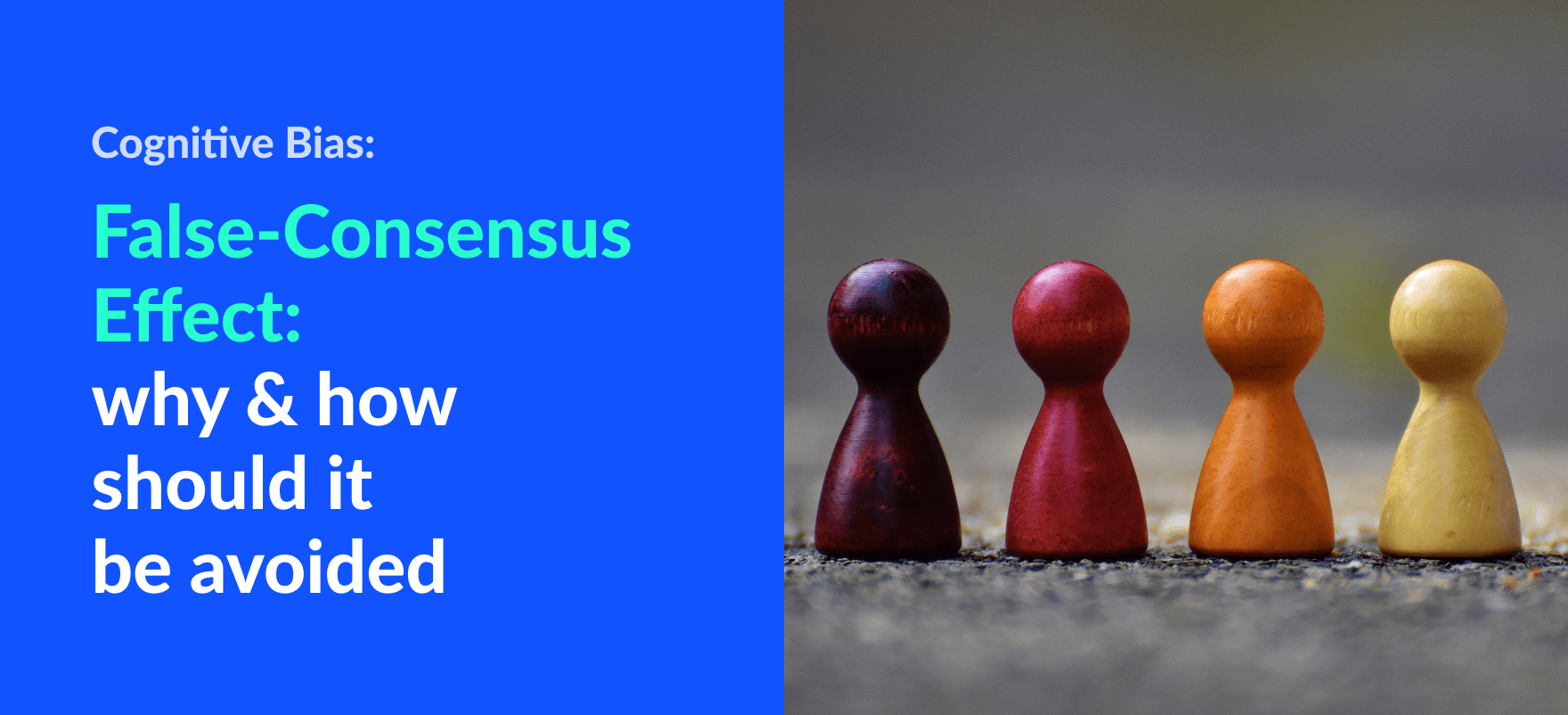What is the False-Consensus Effect?
The False-Consensus Effect is a type of cognitive bias where people assume or overestimate their beliefs and knowledge to be more common to the general public than they are.
This effect is also known as consensus bias.
Let’s ask ourselves a simple question:
Would you prefer a day shift or a night shift?
No matter the answer, we would assume that our answer would be the popular choice among the majority. However, the outcomes may differ from our assumptions.
This effect is mostly seen because our beliefs revolve around us. Thus there is a bias. When we do things that are normal for us we ignore how natural it is for others. This is terrible in UX designing. Especially because we are supposed to work for the user’s experience.
False-Consensus Effect Example
There are a lot of things that we view from our perspective. We can see the effect even in our daily lives.
People generalize their views and say things like “Everybody likes this music band.” because they like the band. They don’t give a thought to how opinions differ from people to people. This is an example of False-Consensus.
Here is another example. People involved in a certain profession may believe that the skills they have developed are imbued into everyone. They would say something like “It’s pretty easy” but it’s not. They are viewing the skill from their standpoint.
Why should the False-Consensus Effect be avoided in UX?
Here is a list of reasons why one should avoid this effect in UX
- We should design for everyone.
When we are creating designs, our design experience should be suited for the majority of the people.
As designers, our responsibility is to make decisions to aid our users. However some may come from our experience, we need to do proper research on what the users want.
- Our intentions might not correspond to our target audience.
Things we innovate or update in our designs may not be something our users wanted. The updates might cause our designs to be complex or clunky. Users want the designs to be smooth.
- We don’t design a product for ourselves.
We are not our users. What we think is not what our users think. We cannot construct designs that are to our liking. This does not always succeed when the products or features are deployed.
How can the False-Consensus Effect be avoided?
Here are some ways we can avoid the false-consensus effect
- Surveys, questionnaires and listening to the user’s feedback
Surveys and questionnaires help us recognize the user’s needs and expectations. This helps us proceed with a proper vision of what we can provide to the users.
- Perform user testings
Here we can test our products with users and see how they interact with our product. We can see what they are struggling with and what they want as an update. This test helps us gather ample resources for our next update.
I personally prefer usability testing over other testing methods. I suggest reading my article on How to perform usability testing.
- Using the 80/20 rule to add/discard features
This rule states that 80% usage of our apps and products are a result of 20% of the features we provide in the product. For pre-existing products, we can see what 20% of our features are and continue to upgrade them because it is a safe bet. For existing systems, we can perform a heuristic analysis or do a feedback survey.
To learn more about this rule read my article on Using Pareto 80/20 Rule in UX design.
Takeaway
We cannot determine that users think the way we do. We provide what users want and the false-consensus effect restrains us from doing so. Ideally, we need to avoid this bias and work with users to determine what they want.
